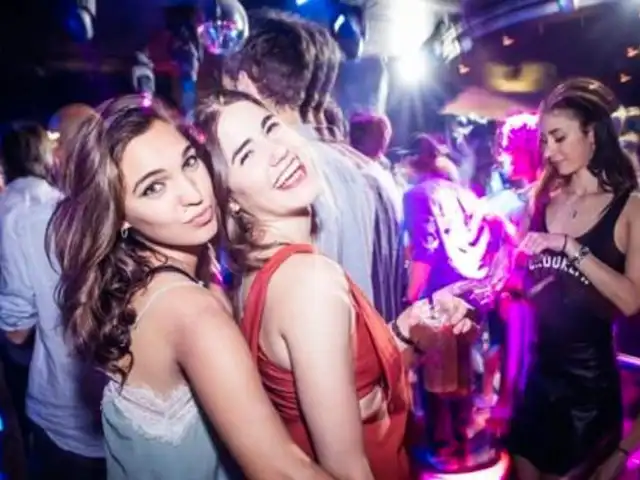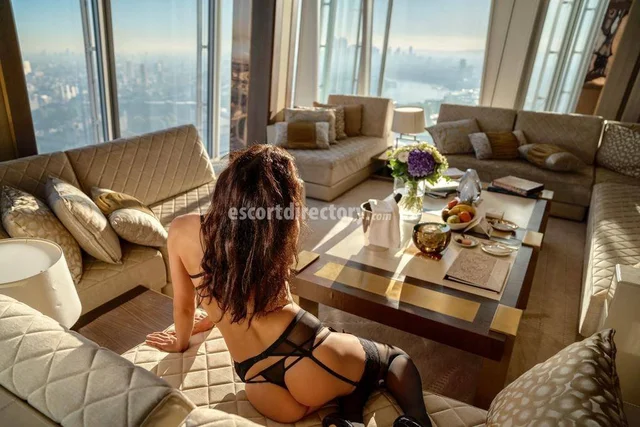When the sun sets over Milan’s sleek boulevards and designer storefronts, the city doesn’t sleep-it transforms. This isn’t just another European capital with a few trendy spots. Milan’s nightlife is a carefully curated mix of old-world charm, cutting-edge design, and underground energy that pulls in locals, fashion insiders, and travelers who know where to look. Forget the clichés. You won’t find endless tourist traps here. Instead, you’ll find hidden courtyards where jazz plays over Aperol spritzes, rooftop terraces with views of the Duomo, and basements that turn into dance floors after midnight. Here are the 10 places that define Milan after dark.
1. Navigli District - Canals, Cocktails, and City Lights
The Navigli canals are Milan’s answer to Paris’s Seine, but with more espresso and fewer crowds. By day, it’s a quiet stretch of antique shops and artisan gelato. By night, it becomes a living ribbon of lantern-lit bars and open-air tables. Start at Bar Luce, designed by Wes Anderson, where the vibe is 1950s Milanese nostalgia meets modern mixology. Then wander down the canal toward La Cucina di Navigli, where locals sip Prosecco and nibble on crostini while live acoustic sets drift over the water. The energy here isn’t loud-it’s intimate. You’ll hear conversations, not bass drops. This is where Milanese couples come to unwind, not to party.
2. Largo Treves - The Underground Jazz Scene
Underneath the shadow of the Galleria Vittorio Emanuele II, Largo Treves hides one of Milan’s best-kept secrets: Blue Note Milano. This isn’t a replica of the New York jazz club-it’s better. The acoustics are engineered for clarity, the lineup features rising Italian jazz stars alongside touring legends, and the crowd? Mostly professionals in tailored coats who know how to listen. No phones on the table. No shouting over the music. Just saxophones, upright bass, and the quiet clink of glasses. If you want to hear something real, not just background noise, this is your spot. Shows start at 9:30 p.m. and sell out fast. Reserve ahead.
3. Terrazza Aperol - Rooftop Views with a View
Perched on the 12th floor of the Palazzo delle Scintille, Terrazza Aperol is the only place in Milan where you can sip an Aperol spritz while looking down at the Duomo’s spires. The terrace wraps around the building, giving you 360-degree views of the city skyline. It’s not cheap-cocktails start at €14-but it’s worth it for the atmosphere. Sunset here is a ritual. Locals arrive at 7 p.m., dressed in black and beige, with a quiet confidence. The crowd is mostly 30-somethings: architects, designers, fashion editors. No gimmicks. No neon. Just good drinks, soft lighting, and the hum of the city below. Come early if you want a seat.
4. 10 Corso Como - Art, Fashion, and Late-Night Drinks
10 Corso Como isn’t just a boutique or a gallery-it’s a lifestyle. Founded by Carla Sozzani in 1991, it blends a bookshop, art exhibits, a restaurant, and a bar into one seamless experience. The bar, tucked behind a green curtain, opens at 6 p.m. and stays alive until 2 a.m. The cocktails are named after artists: the Yves Klein (blue curaçao, gin, lemon), the Warhol (vodka, elderflower, edible gold). The vibe? Quietly cool. You’ll spot models from the latest Prada show sipping wine next to students sketching in notebooks. It’s not a club. It’s a gathering place for people who care about culture. The garden, lit by string lights, feels like a secret garden in the middle of the city.
5. Birreria Della Stazione - Craft Beer in a Railway Warehouse
Tucked inside a restored 19th-century railway warehouse near Porta Garibaldi, Birreria Della Stazione is Milan’s answer to Berlin’s beer halls. They serve 30+ craft beers on tap, all from small Italian and European breweries. The Amber Ale from Birrificio Italiano is a favorite. The space is industrial-exposed brick, steel beams, wooden barrels-but cozy. Tables are packed tight, and the staff remembers your name after one visit. It’s not glamorous, but it’s real. You’ll find engineers, artists, and travelers all sharing the same long table, talking about the latest fashion show or the best pizza in town. Open until 1 a.m. on weekdays, 2 a.m. on weekends.

6. The Loft - Where Milan’s Party Scene Begins
If you’re looking for a real nightclub, The Loft is where the crowd goes after midnight. Located in a converted industrial building in the Isola district, it’s the most consistent spot for electronic music, house, and techno. The sound system is top-tier-engineered by Italian audio specialists. The lighting is minimal: just strobes, lasers, and shadows. The crowd? Mostly locals in their 20s and 30s, dressed in minimalist black, with a focus on movement, not status. Entry is €15 after 1 a.m. No VIP tables. No bottle service. Just music and sweat. It’s not for everyone-but if you’ve ever danced until your feet hurt in a place that felt alive, this is it.
7. Cova - The Sweet Side of Milan Nights
Don’t skip dessert. Cova, the legendary pastry shop on Via Montenapoleone, stays open until midnight. It’s not a bar, but it’s a nightcap destination. Their panettone gelato, made with real candied fruit and vanilla bean, is legendary. So is the tiramisù tart, layered with espresso-soaked ladyfingers and mascarpone cream. Locals come here after dinner, after drinks, after clubs. It’s quiet, elegant, and warm. The staff knows regulars by name. You’ll see businesswomen in heels, tourists in jeans, and elderly couples sharing a single slice. It’s proof that Milan’s nightlife doesn’t always need alcohol to feel complete.
8. Piazza del Duomo - Midnight Strolls and Free Entertainment
Even if you’re not drinking, Milan’s center never sleeps. After 11 p.m., the Duomo’s facade glows under soft spotlights. Street musicians play classical pieces on violins. A group of teenagers breakdance near the Galleria’s entrance. Couples sit on the steps, sharing a bottle of wine from the corner store. It’s free, it’s safe, and it’s deeply Italian. No cover charge. No pressure. Just the city breathing. Walk around the square at 1 a.m. and you’ll understand why Milan’s nightlife isn’t about loudness-it’s about presence.
9. Spazio Oberdan - Experimental Nights and Live Art
On the last Friday of every month, Spazio Oberdan turns into an experimental playground. DJs spin obscure vinyl from the 1980s. Performance artists paint on canvas while dancers move through the crowd. Poets read in Italian, English, and Arabic. It’s organized by local collectives, not corporations. Entry is €5. The crowd is diverse: students, retirees, queer artists, foreign curators. You won’t find this anywhere else in Milan. It’s raw. It’s unpredictable. And it’s the heartbeat of the city’s underground scene. Arrive at 10 p.m. and stay until 3 a.m.

10. Il Gatto Nero - The Last Bar Standing
Open since 1972, Il Gatto Nero is a relic in the best way. A tiny, dimly lit bar near Porta Venezia, it’s been run by the same family for 50 years. The walls are covered in old photos, concert tickets, and handwritten notes from patrons. The bartender doesn’t use a menu-he asks what you’re in the mood for, then makes something that fits your silence or your laugh. Their Old Fashioned is made with a single ice cube, stirred for 45 seconds. No garnish. Just whiskey, sugar, and time. It closes at 3 a.m. sharp. If you’re still awake, you’ll want to be here.
What to Know Before You Go
- Dress code matters-Even casual spots expect smart-casual. No flip-flops, no athletic wear. Jeans and a clean shirt are fine. A blazer? Always a plus.
- Start late-Dinner doesn’t begin until 8:30 p.m. Bars fill up after 11. Clubs don’t get busy until 1 a.m.
- Cash is still king-Many small bars don’t take cards. Keep €20-€30 in your pocket.
- Reservations are essential-For Blue Note, Terrazza Aperol, and 10 Corso Como, book online a week ahead.
Where to Stay Near the Action
If you want to walk home after a night out, stay in Brera, Navigli, or Isola. These neighborhoods are safe, quiet, and full of boutique hotels. The Four Seasons and Mandarin Oriental are great for luxury, but you’ll find more character in places like Hotel Spadari Al Duomo or Locanda dei Artisti. Both are within 10 minutes of the top nightlife spots.
Final Thought: Milan’s Nightlife Isn’t About Being Seen
It’s about being felt. In New York, you go out to be noticed. In London, you go out to be part of the scene. In Milan, you go out because you want to taste the city’s soul-slowly, quietly, with a good drink in hand. The best nights here don’t end with a club closing. They end with you walking home under the Duomo’s glow, wondering when you’ll come back.
What is the best time to visit Milan for nightlife?
The best time is from April to October. Weather is mild, outdoor bars like Navigli and Terrazza Aperol are open, and festivals like Milan Design Week bring extra energy. Summer nights are long, and the city feels alive until 3 a.m. Winter nightlife is still vibrant but more indoor-focused-think jazz clubs and cozy wine bars.
Is Milan nightlife safe at night?
Yes, Milan is one of Italy’s safest major cities at night. Stick to well-lit areas like Brera, Navigli, and Isola. Avoid poorly lit alleys near Porta Genova after midnight. Public transport runs until 1:30 a.m., and taxis are easy to find via apps like Free Now. Most bars and clubs have security, and locals are generally respectful.
Do I need to book tickets for Milan clubs?
For most clubs like The Loft, no-you can just show up. But for venues like Blue Note Milano, Terrazza Aperol, and 10 Corso Como, booking ahead is essential. Many places use Eventbrite or their own websites. Walk-ins are welcome at casual bars, but you might wait for a table during peak hours.
How much should I budget for a night out in Milan?
A casual night out-dinner, two drinks, and a dessert-costs about €50-€70. A night at a rooftop bar or jazz club runs €80-€120. Clubs charge €10-€20 entry. If you stick to craft beer bars and local spots, you can enjoy a full night for under €60. Skip the tourist traps near the Duomo-they overcharge.
Are there English-speaking bartenders in Milan?
In tourist-heavy areas like Navigli and near the Duomo, yes. But in places like Il Gatto Nero, Spazio Oberdan, or Birreria Della Stazione, staff often speak limited English. That’s part of the charm. Learn a few Italian phrases-"Un bicchiere di vino, per favore"-and you’ll be welcomed warmly. Most bartenders appreciate the effort.
What’s the difference between Milan and Rome nightlife?
Rome’s nightlife is loud, sprawling, and centered around piazzas and open-air parties. Milan’s is quieter, more curated, and design-focused. You’ll find more jazz, craft beer, and rooftop bars in Milan. Rome has more street parties and late-night pizza joints. Milan feels like a fashion show after dark-every detail matters. Rome feels like a family dinner that never ends.



